Email marketing is a powerful way to connect with your target audience, stay in touch with your customers, drive sales, and build brand loyalty. Unfortunately, not every email campaign is successful, and seeing low open and click-through rates can be frustrating.
So, if you are tired of sending out email campaigns only to see disappointing results, this article is for you. Today, we’ll break down the top reasons why your email campaigns might not be hitting the mark. And more importantly, we’ll give you practical solutions to help you turn things around.
- The 13 Reasons Your Email Campaigns Are Ineffective
- 1. Emailing Everyone
- 2. Not Segmenting Email Lists
- 3. Using Spammy Subject Lines
- 4. Not Personalizing Your Messages
- 5. A Weak Call-To-Action
- 6. Going For The Sale Too Soon
- 7. Sending Your Emails at the Wrong Time
- 8. Not Following Up
- 9. Focusing On Just One Channel
- 10. Not Continuously Improving Your Campaign
- 11. Not Doing Outbound
- 12. You Don’t Communicate Well With Your Customers
- 13. Not Using Email Automation
- Transform a Failing Email Campaign into a Successful One
- Build a List of Engaged Subscribers
- Focus on Email Personalization
- Optimize Emails for Mobile Devices
- Do Email Automation
- Keep Your Subject Lines Short And Catchy
- Segment Your Audience
- Test, Measure, And Adjust
So, let’s get real and dive into the world of email marketing together!
The 13 Reasons Your Email Campaigns Are Ineffective
Here are some common reasons why your email campaigns fail:
1. Emailing Everyone
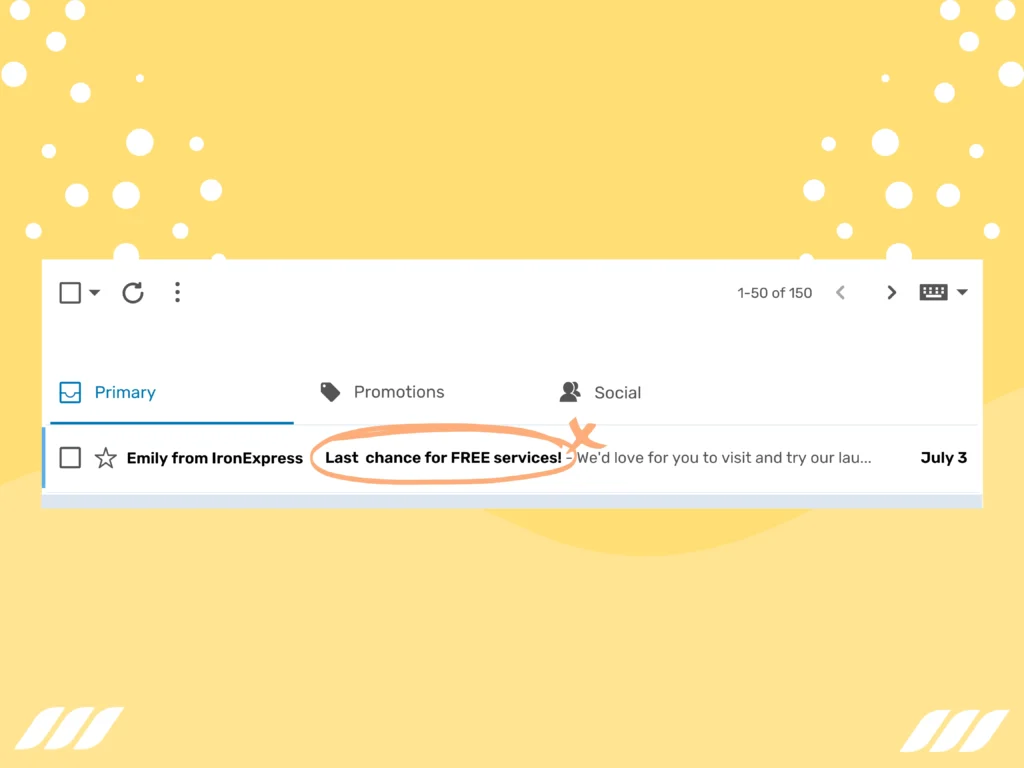
Remember the golden rule: quality over quantity? It applies to email marketing!
Say you own an online store selling shoes and wish to increase sales through an email campaign. So, you gather the emails of everyone in your area who has purchased shoes from you and anyone who has ever signed up for your newsletter. Now, you have thousands of emails ready to blast out promotional offers for your shoe store.
But here’s the problem: not everyone who receives your message will be interested in buying new shoes from you. Sure, some may love what they see and make a purchase — but most people won’t even bother opening the message, let alone click through to buy something.
They may find the content irrelevant or be overwhelmed by the sheer number of daily offers. This is why it’s important to focus on quality rather than quantity when creating an email campaign. If you target people who are likely to respond positively, you have a much higher chance of success!
You must pre-qualify your leads to ensure that your emails reach the right audience and generate better results. This testing and qualifying phase will help you determine which customer stratum can get you the most profit, and you can plan accordingly.
Lead qualification involves listing your potential customers’ interests and adding them to email campaigns that resonate with those individual groups. This approach ensures your email recipients care about what they see and are more likely to take action.
Read also: Email Outreach Tracking Tips
2. Not Segmenting Email Lists
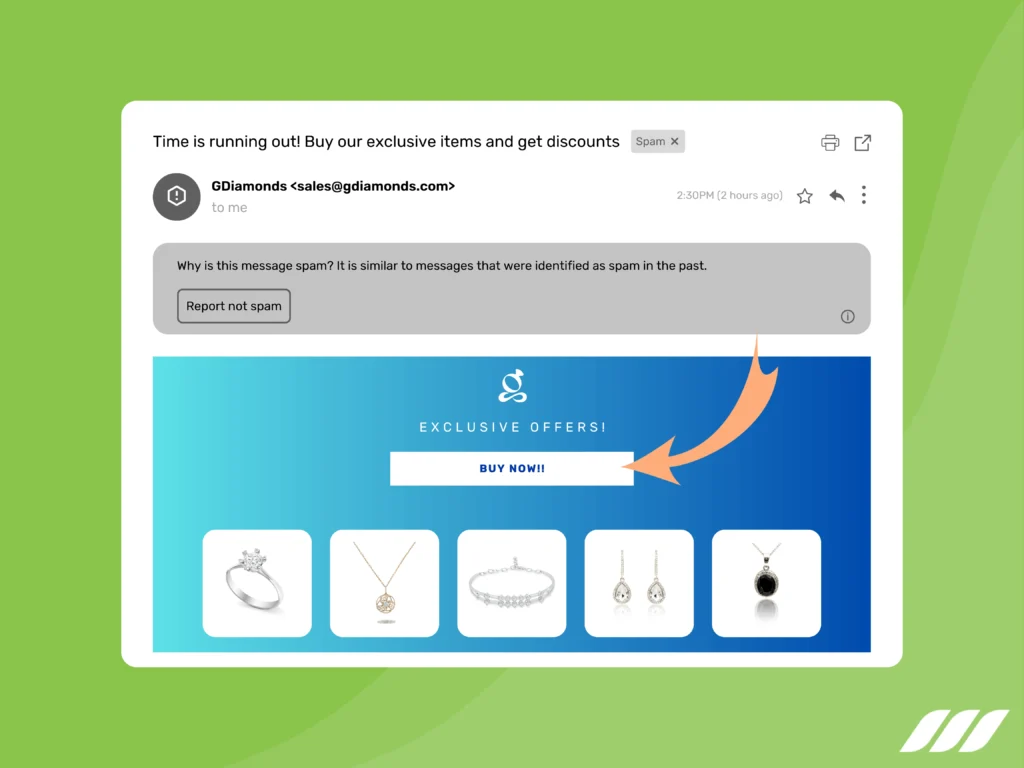
Segmenting refers to the process of dividing your customer base into smaller groups based on shared characteristics or interests. It allows you to create more targeted and personalized messages that are more likely to get opened, read, and responded to.
For example, if you own a clothing store, segmenting your email list could mean dividing customers into two categories based on gender. You can then create separate emails for men’s products and women’s products.
If you send generic emails to everyone on your list without considering any preferences, the chances of someone opening those messages are much lower. People appreciate feeling like their views are being considered; it helps foster trust in the company.
Let’s continue with the example of a shoe store.
Say you want to promote a new line of sneakers that just came out. If you don’t segment your list, you might end up sending an email featuring those sneakers to everyone who has purchased anything from your store — from sandals to loafers to heels.
However, only those who have shown an interest in purchasing sneakers will open that email and click through it; all other customers will likely delete it or ignore it because they aren’t interested in what the message has to offer them personally.
On the flip side, if you had segmented your list and created separate messages for each type of shoe customer (i.e., one message targeting sneaker lovers), everyone on the receiving end would have seen something that specifically resonated with them. This can increase email open rates and click-through rates significantly!
3. Using Spammy Subject Lines
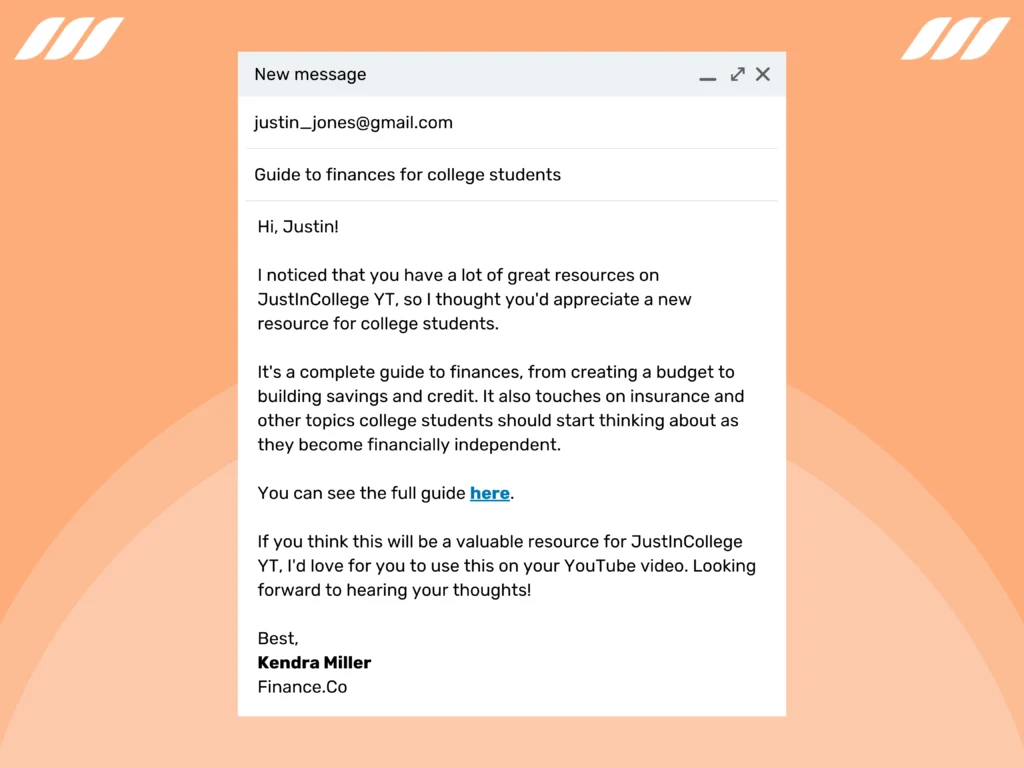
One of the biggest mistakes businesses make when creating email campaigns is using spammy subject lines. What is a spammy subject line, you ask? Well, spammy subject lines are those that use attention-grabbing words like “free” or “win” or contain more than one exclamation mark. They also include phrases like “buy now” or “last chance.” These subject lines are designed to grab the reader’s attention but often appear too aggressive and pushy.
Let’s say you have a new product launch coming up, and you want to announce it in an email campaign. If you were to use a subject line like “The Best Product Launch Ever!!!” chances are few people will even open it.
A better approach would be to use something more subtle and informative, such as “Introducing Our Newest Product Line.” This allows readers to understand the email without having to guess or think too hard about it.
Remember, using overly promotional language in your emails can trigger spam filters that may prevent your emails from ever reaching their intended recipients! Learn more about how to avoid spam filters.
If a recipient marks one of your emails as spam, then all future emails from that address will likely end up in their spam folder automatically. This means fewer people will see them, reducing the chances of someone taking action on them.
Extra Tip: Remember email list hygiene is very important in each email campaign it is a process of keeping your email list clean by regularly removing invalid and unengaged email addresses.
4. Not Personalizing Your Messages
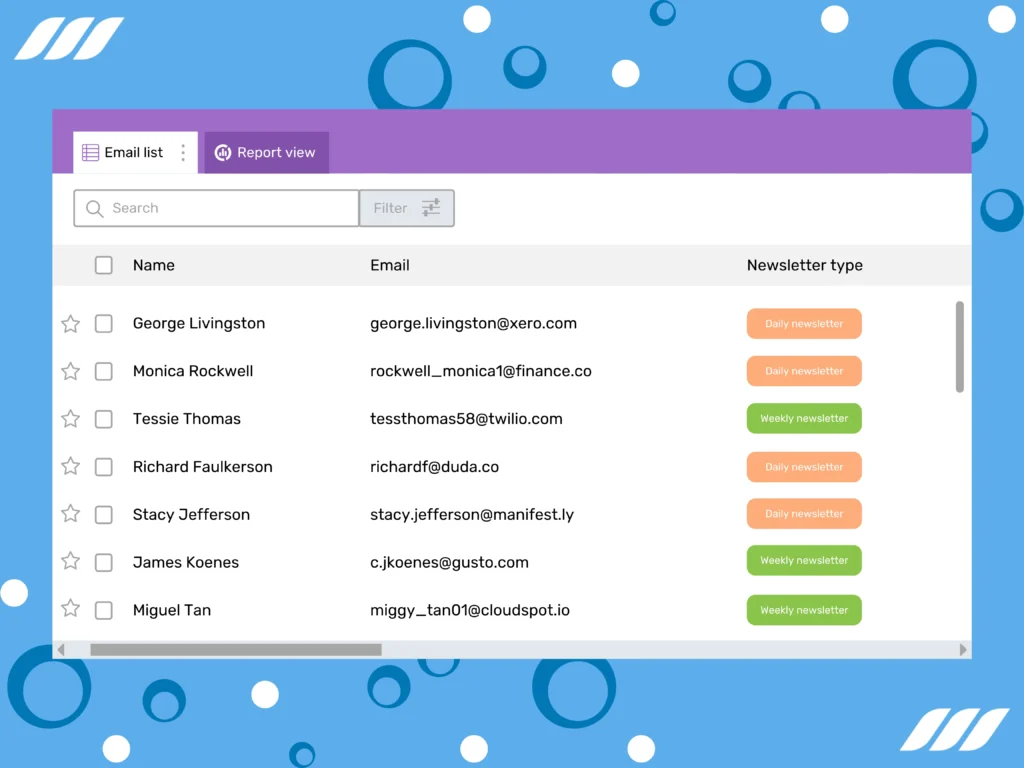
Have you ever sent out an email campaign only to see crickets in response? One of the most common culprits here is a lack of smart email personalization strategy.
At its core, personalizing emails means taking the time to make sure each message resonates with the recipient. It is a good idea to tailor the language and content to the needs and interests of your target audience. This could include addressing them by name, referencing past purchases or interactions, or simply providing content that appeals to their tastes and desires.
Personalization shows that you care about the customers as individuals rather than just viewing them as another sale. If consumers feel like they’re being catered to on a personal level, they’re more likely to trust you and continue doing business with you in the future.
On top of that, personalized emails tend to have higher open rates since people are more likely to pay attention when something has been specifically crafted for them. These higher open rates lead to more clicks and conversions down the line.
Let’s look at an example from XYZ Clothing Company that illustrates how not personalizing emails can negatively impact an email campaign. XYZ Clothing recently sent out a promotional newsletter promoting their new fall clothing line without any customization or segmentation whatsoever; every subscriber received the same generic message regardless of gender, age range, or past purchase history.
As a result, many subscribers felt ignored and unappreciated; if XYZ Clothing didn’t even bother to customize their messages based on past behaviors or interests, why should those subscribers continue doing business with them? Needless to say, this resulted in decreased open rates and fewer conversions overall – a lesson for us all!
Read also: Cold Emailing Myths
5. A Weak Call-To-Action
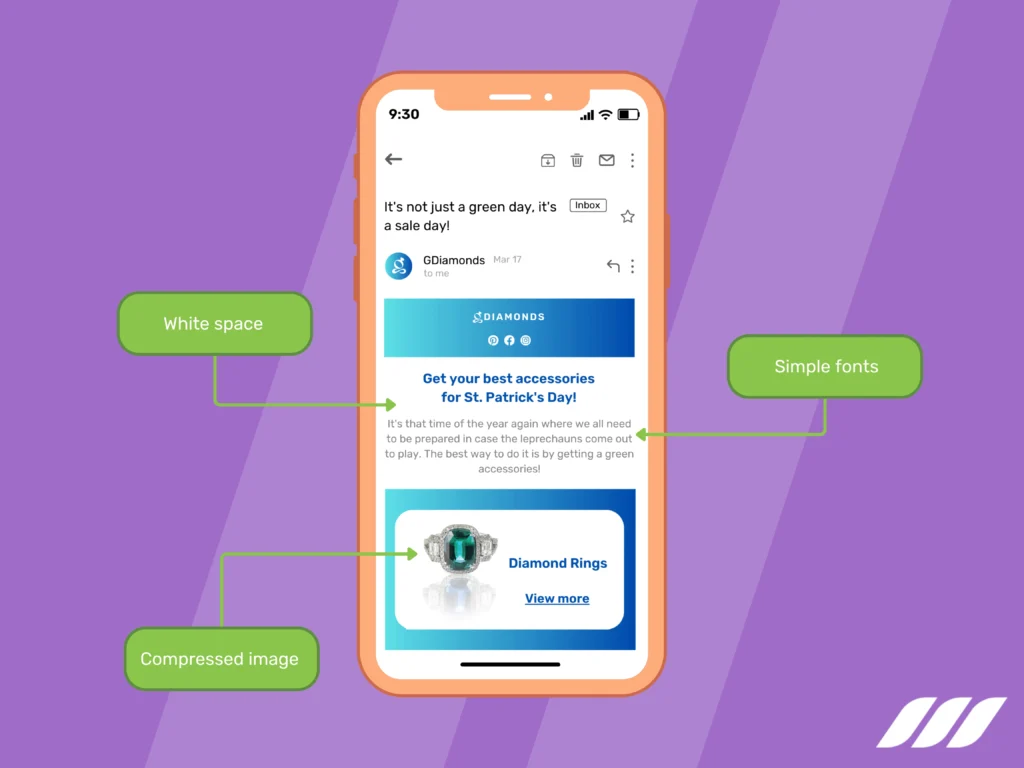
A call-to-action (CTA) is one of the most powerful tools for getting your message across to your audience. It’s part of a campaign that tells your readers what action you want them to take — whether that’s signing up for an event, reading more content, or making a purchase.
A CTA can make or break an email campaign and its chances of success, so it’s essential to understand why they are important and how to craft them effectively.
Imagine you’ve created an email campaign for a new product launch and done all the necessary work. You’ve chosen an attractive design, written compelling copy, and gathered all the required information. But when it comes to writing the CTA, you simply type out “Buy Now” and call it a day. What happens next? Not much — because without an engaging CTA, your readers won’t be motivated enough to take action.
Your CTA should be concise yet convincing; it should clearly explain what action you want your reader to take and why they should do it. Good CTAs are often written in the second person (“you”) and include words like “now,” “today,” or “immediately.”
They also use strong language that conveys urgency and encourages people to act quickly. For example, if you’re trying to get people to sign up for an event, saying something like “Reserve Your Spot Now!” is much more effective than just “Sign Up Here.” Or buy email automation software, saying something like “Start Free Trial“.
Incentives such as discounts or free shipping can also help boost conversions by giving people an extra reason to act now rather than later.
When crafting your CTA, make sure that it’s tailored specifically toward what you’re trying to achieve. Whether that’s increased website traffic or higher conversion rates so that readers will more likely click on it and actually follow through with their intended action.
Also, don’t forget about testing!
Different CTAs will work better with different audiences, so try out different options until you find one that resonates with yours. Once you have found a CTA that works well with your particular audience, stick with it — consistency is critical when building customer relationships.
6. Going For The Sale Too Soon
The goal of any email campaign should be to build trust and relationships with your recipients. It’s not just about selling a product; it’s about connecting with potential customers emotionally.
To do this, you must provide value before asking for something in return. Otherwise, your emails will come across as overly sales-y and spammy, hurting your reputation over time.
Let’s imagine you run an online store selling handmade jewelry and want to send out an email campaign introducing some of your new pieces. Instead of providing helpful information, such as tips on how to care for handmade jewelry or what styles are popular this season, you jump right into “Buy now!” territory.
You may get some response from the campaign, but it won’t be nearly as effective as if you had taken the time to establish a relationship first.
Of course, there is room in all campaigns for making sales pitches. But let’s face it; no one likes feeling like they’re being sold something without context or value being offered first. That’s why it’s crucial to create content that educates and informs potential buyers before pushing them toward a sale.
It is good to provide tips or advice about your product or industry and give them reasons why they should buy from you other than “because we said so”. This approach will make them more likely to trust you enough to make a purchase down the line. Something that can only happen if they open up their emails in the first place because they think they’re just getting spammed with generic sales pitches.
Read also: How to Write an Effective Collaboration Email
7. Sending Your Emails at the Wrong Time
You might not realize it, but timing is crucial in email marketing. If you send your emails at an off time, your potential customers may only see them in their inboxes. This means your messages will go unread, and your business will miss out on a valuable opportunity to make a connection.
Let’s take the example of a small business that sells specialty coffee beans. The business plans to send out an email campaign highlighting some new flavors that have just become available. They scheduled the email to go out on Thursday morning but unfortunately forgot to factor in the different time zones around the country where potential customers might be located.
As a result, many of those people won’t receive the message until late Thursday night or Friday morning — well past the peak “email check-in” times for most people.
When this happens, two things occur as a result: firstly, fewer people will see (and open) your email since it has arrived too late.
Secondly, those who open it are likely not in “buying mode” anymore since they are no longer focused on what happened during their workday earlier in the week. They are now thinking about what to do over the weekend instead.
As such, the campaign gets fewer clicks and conversions than if the email was sent when more people were actively checking their inboxes.
8. Not Following Up
You might be surprised to learn that your campaigns fail because you’re not following up.
Say you create an email list for marketing purposes, for your handmade jewelry business and send out a weekly newsletter announcing new items in your shop every Friday. You craft well-written emails with compelling subject lines featuring beautiful product images and special deals for your subscribers. But week after week, you get next to nothing regarding response or sales from your campaigns. What’s going on?
The answer may be that you’re only sending one email per week. Without follow-up emails, customers may forget what they saw in their inbox earlier that week when they’re ready to make their purchase decision later. If they don’t remember seeing your message, they won’t be interested in buying anything from you!
Fortunately, follow-up email can help solve this problem by reminding customers of what they saw earlier and providing another chance to buy something from you.
By sending additional messages during the week, not necessarily related directly to the original message but still promoting products, you increase the chances that customers will see your product multiple times before making their purchase decision.
Also, increasing the frequency of messages sent over time will make customers more familiar with your brand and more likely to trust it over competitors.
Read also: How to End an Email Professionally
9. Focusing On Just One Channel
Let’s say your company has been running email campaigns for several months now, and you’ve noticed that the open rates have been consistently low.
You’re starting to worry about the efficacy of your email campaigns and can’t figure out why they aren’t performing better — what’s going wrong?
While emails do provide an excellent platform for delivering information directly into the inboxes of potential customers, they need to be complemented with other sales strategies if they are truly going to be effective.
By branching out into other channels and utilizing them strategically, you can increase visibility for your brand and achieve higher open rates from more engaged audiences.
10. Not Continuously Improving Your Campaign
To ensure that your email campaigns stay up-to-date and effective, it’s important to know the latest trends. Some newer trends in email campaigns include using more interactive elements such as videos or animations, personalization techniques like addressing customers by their first name in emails, and ensuring that emails are optimized for mobile devices.
All of these strategies can help make your emails stand out from the competition and give them a better chance at reaching customers.
What’s more, implementing these trends doesn’t have to be difficult or time-consuming. There are plenty of tools available that can help you optimize your campaigns quickly and easily. For example, most email service providers offer features that allow you to automatically personalize emails with a customer’s name or create dynamic content blocks that can be used in multiple emails.
Additionally, there are services available that specialize in creating high-quality videos or animations for use in email campaigns.
As technology progresses and new trends emerge, it is essential to keep up with those changes, so your messages don’t get lost in the shuffle before reaching their intended audience.
11. Not Doing Outbound
Outbound is a method of outreach in which you actively reach out to potential customers and prospects instead of waiting for them to come to you.
Here’s why not doing outbound can make your campaigns fail:
- When businesses do not actively reach out to potential customers, they limit the scope of their audience and jeopardize their chances of success. With the right message and reach-out strategy, businesses can target their ideal customers more precisely and efficiently.
- Lack of outbound can make you risk being drowned out by the competition. In today’s digital age, the competition online is fierce; companies must take advantage of every opportunity to stand apart from the crowd.
Outreach through emails helps companies stand above the noise and make lasting connections with prospects who are already interested in what they have to offer — which leads us to our final point:
- Not doing outbound also means you’ll miss out on the opportunity to foster relationships with prospects who are already interested in what they have to offer.
Outreach allows companies to connect with prospects that are interested in what they’re offering or may be looking for what they provide but haven’t yet found it.
12. You Don’t Communicate Well With Your Customers
Let’s consider the hypothetical case of Joe’s Computer Store, which sells computer parts online.
Joe wants to start an email campaign to advertise his products and increase sales. He creates a database of emails from existing and prospective customers and sends mass messages about his products.
However, he does not include personalization and sends out generic promotional materials without considering what kind of information would be most useful to each customer.
Joe’s approach is doomed from the start, as it fails to consider that different customers have different needs and interests. Instead of tailoring his message to each customer based on their past purchases or other data points, he sends them all the same generic messages — which often go unread.
Failing to communicate effectively with customers and sending out generic content has made Joe miss out on an opportunity to build rapport with his customers. The lesson here is clear — poor communication with your customers can make your email campaigns fail.
To have successful email campaigns, you need to understand who your customers are and what their unique needs are so that you can create personalized content that speaks directly to them. That way, you can build relationships with your customers that will last for years and likely result in more sales for your business!
13. Not Using Email Automation
Do you find that your open rates are far too low and your click-through rate is nonexistent? If so, it might be time to look at how you manage your email campaigns. If you’re not using email automation, that could be the biggest reason your campaigns fail.
Email marketing automation lets you send emails automatically without manually entering each recipient’s information or writing out an individual message.
Instead, you can use a template and have it send out personalized emails to each recipient with just a few clicks of a button. This allows for much more efficient management of emails since automated emails only need to be set up once, and then they’ll keep going until stopped or changed.
The best email marketing automation tools can help save time and money while increasing your email campaigns’ efficiency. Since everything is automated, there’s no need to manually send out individual messages or double-check that everyone received their emails.
Likewise, automated emails tend to have higher open rates than manual ones because they appear more personalized than generic messages sent from one account to many people at once.
Finally, since specific events or customer behaviors often trigger automated emails, they can lead directly to increased sales and conversions.
Transform a Failing Email Campaign into a Successful One
Now that you know why your email campaigns fail, it’s time to turn things around for the better.
Read also: Best Email Drip Campaign Examples
Here are some tips that can take your emails out of the dungeons and get some eyes on them:
Build a List of Engaged Subscribers
A crucial step in launching a successful email campaign is to build up an engaged list of subscribers. This means that you should only add people to your list who have signed up for emails from your business.
Don’t add anyone who hasn’t given their explicit permission; doing so will not only decrease your engagement rate but could also result in legal consequences. It’s better to start small and let your list grow organically over time than trying to buy bulk lists or scrape emails off the internet.
Once you’ve built up an engaged list of subscribers, it’s important that you keep it clean by regularly removing inactive subscribers. You can do this by looking at each subscriber’s open and click-through rates, as well as tracking which emails they unsubscribe from or mark as spam.
Focus on Email Personalization
Personalizing emails can have a big impact on how successful your campaigns are. It means addressing each recipient by name in the subject line and body of the email, as well as tailoring content specifically for them based on their interests or past purchases.
Doing so helps build stronger relationships between you and your customers, making them more likely to stay engaged with future emails.
You can also use personalization techniques like dynamic content or A/B testing to ensure that each email is tailored specifically for its intended audience. Dynamic content allows you to customize each message based on the recipient’s preferences.
At the same time, A/B testing lets you test different versions of emails before sending them out en masse so that you can make sure they’re optimized for maximum engagement rate.
Optimize Emails for Mobile Devices
Since a big chunk of your email traffic comes from mobile devices, you must focus on this optimization aspect. It means that all images, text, and links should be displayed correctly on mobile devices such as phones and tablets.
If your emails look good on mobile, then many people will only bother to read them or click through any links.
Tips to create mobile-optimized emails:
- Make sure all images load quickly on mobile devices by using compressed image files.
- Test how your emails look on different platforms before launch so you can fix any issues.
- Keep the fonts simple – avoid fancy or tiny font sizes that will be hard to read on a small screen.
- Use plenty of white space in between sections so readers can easily navigate through the email without becoming overwhelmed by too much text at once.
Do Email Automation
When email automation tools are here to save you a ton of effort, why not use them? Automation allows you to automate tasks such as sending out personalized emails based on customer behavior or creating automated sequences that trigger messages when someone signs up for your mailing list or makes a purchase.
Not only does this save time and energy, but it also ensures that customers receive timely and relevant messages that will engage them more with your brand and products/services.
Here are some tips for setting up automated emails:
- Create welcome messages for new subscribers so they feel appreciated and informed about what they signed up for right away.
- Set up automated reminders about upcoming deadlines or events, so customers remember to take action before it’s too late (e.g., “Sign up now before spots fill up!”).
- Send out periodic surveys or feedback forms to stay connected with customers and find out what kind of content they want from you in the future (e.g., “Tell us what topics you would like us to cover in our next newsletter!”).
- Send thank you messages after purchases or service requests have been completed to show appreciation and encourage further engagement (e.g., “Thank you for choosing us! We hope we exceeded your expectations!”).
Keep Your Subject Lines Short And Catchy
Since the subject line of an email is often the first thing your readers will see, it needs to be both short and catchy. Aim to keep your subject lines between four and eight words — any longer than that, and they may get cut off in certain inboxes.
Also, try to make the subject lines interesting enough so readers will want to click on them immediately; if possible, include an incentive such as a discount or freebie for clicking through.
Segment Your Audience
As we explained the power of email segmentation earlier, you must include it in your email marketing strategy. Segmentation allows you to target specific audiences with tailored emails instead of sending out generic messages to everyone in your database.
You should also consider segmenting based on past behaviors, such as whether they opened or clicked any previous emails; those who can be sent more personalized messages while those who didn’t can receive different content altogether.
Test, Measure, And Adjust
One of the key principles of successful email marketing is to test, measure, and adjust your campaigns. This means continuously evaluating the performance of your campaigns and making changes to improve their effectiveness.
You can determine what resonates with your target audience and what doesn’t by testing different aspects of your email campaigns, such as subject lines, call-to-actions, and email content. This information can then be used to make adjustments to future campaigns to achieve better results.
It’s also important to measure the key metrics of your email campaigns, such as open rates, click-through rates, and conversion rates, to understand how they are performing and identify areas for improvement.
By consistently testing, measuring, and adjusting your email campaigns, you can ensure that they deliver the desired results and continuously improve over time.
Plus, before sending out a large-scale email, you can send test versions of the email out first to small groups of recipients so you can measure their response rate and adjust accordingly before releasing the full version.
This could involve changing design elements or tweaking language for the message to be better received by potential customers. Testing and measuring before sending out mass mailings can save you from potentially disastrous results down the line!
Read also: Ultimate List of Email Marketing Statistics
Conclusion
It’s no secret that email marketing can be a highly effective tool for businesses to reach their target audience, drive sales and build brand awareness, but only if done right. By understanding the common reasons why your email campaigns might be failing, you can take the necessary steps to improve your strategy and achieve better results
Whether it’s creating more compelling subject lines, optimizing your email content for mobile, or segmenting your email list, there are many things you can do to make your email campaigns more effective.
By following the tips and solutions outlined in this article, you can turn your email marketing efforts into a powerful tool for your business. So, embrace the power of email marketing, and start making the most of your email campaigns today!
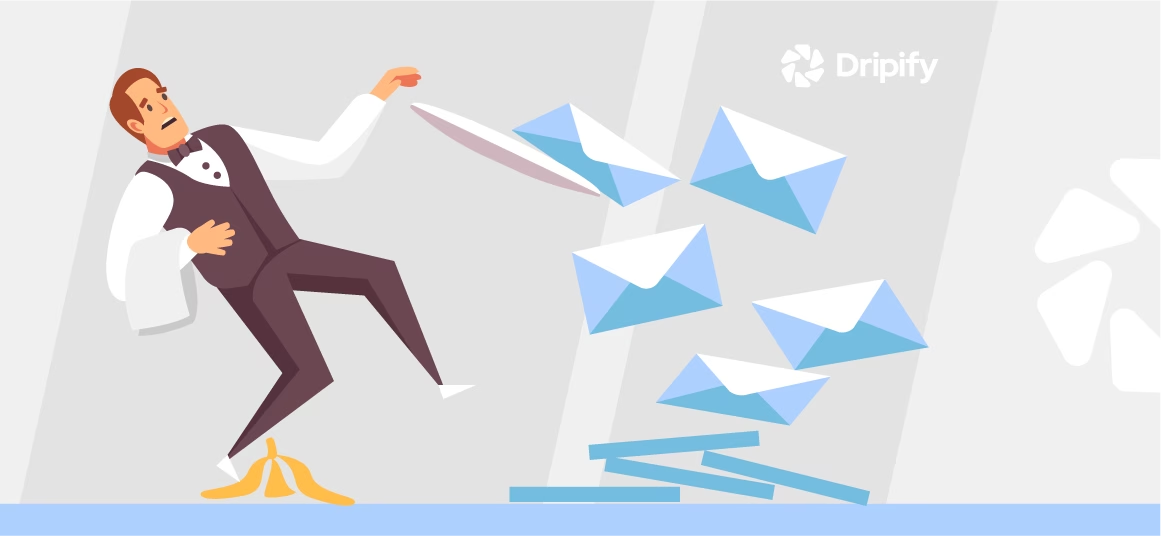
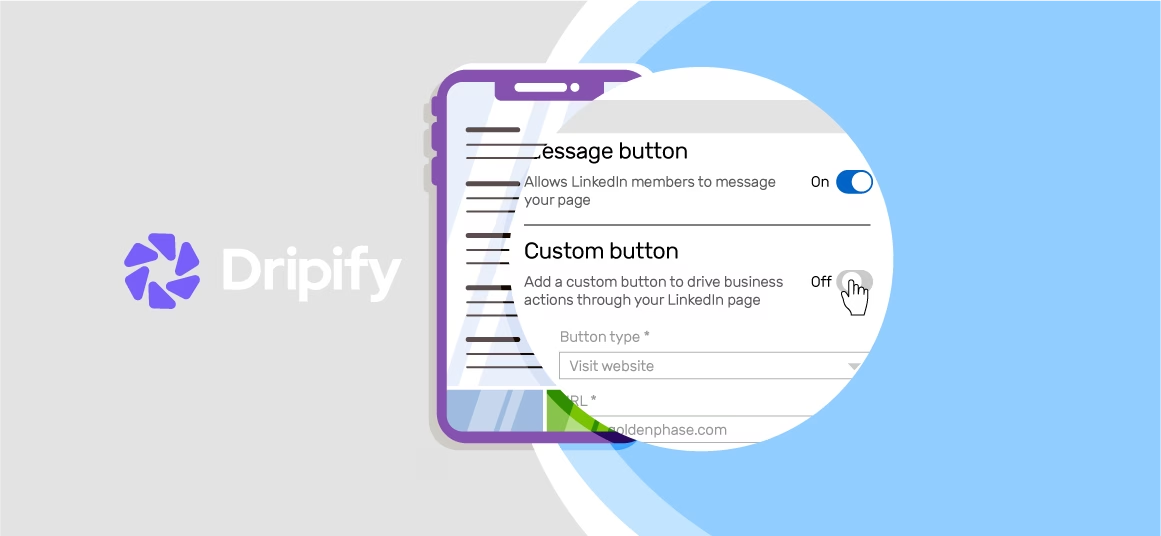
![Email Outreach Tracking [Tips, Tricks and Tools]](https://dripify.io/wp-content/uploads/2025/02/11-7-png.avif)
![Create a Prospecting Plan [+8 Prospecting Methods]](https://dripify.io/wp-content/uploads/2025/02/11-png.avif)